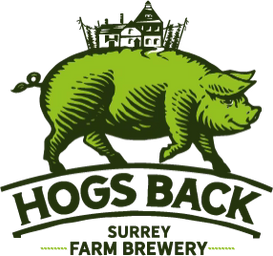How to grow your own Hogs Back hops
With our hops growing very well in this lovely weather out in the garden, we have a limited number of leftover Cascade hop plants looking for new homes.
If you have used some of your free-time to start a few garden projects, then perhaps you would like to turn your hand to hop growing? You can now pick up a hop plant from the brewery shop drive-through in return for a suggested £5 donation to the Alzheimer's Society, our charitable partner for 2020. It's best to get them planted before June so if interested we would recommend popping by before the end of the week.
To help you out, Matthew, our Hop Garden Manager has put together a 10 stage guide which takes you all the way through to harvesting your hops at the end of the summer.
May/June
1). At this stage your plant is a bit of an ugly thing with just a few roots and a couple of shoots coming out from the soil. Choose a south-facing location that receives plenty of daytime sunlight and ideally drains well. Bury your Cascade plant in the ground, making sure to compact soil surrounding the roots leaving the crown (main body of root system) just below the surface.
2). Nurture your growing Cascade root with frequent light watering. The first shoots will grow quickly for the first 2/4 weeks after planting but you will only need 3-4 shoots to climb so trim back any extras.

3). Support the hops bines as they grow. Insert askewer close to the plant and attach a Coir cord or rough textured string at the top of a cane or trellis at a height of at least 10 to 12 feet. Encourage the shoots to attach to this cord. Hops prefer to grow vertically in a clockwise manner around the cord, it is not uncommon for plants to grow many inches per day at the height of summer. Please note the shoots have barbs to help it grip to the cord which can cause light irritation to the skin so you may wish to wear gloves.
4). As the bine has grows, you may strip the lower leaf from the base to around two feet in order to allow natural air flow through the plant therefore preventing mildew forming around the crown.
Summer
5). By Midsummers Day (end of June) your Cascade Hop will have reached its maximum height and will begin to expand by pushing out horizontal stems. At the end of each stem a collection of buds will appear named Pins. A short time (3/4 weeks) following the appearance of the Pins they will start forming into small spikey flowers named Burrs.

6). Eventually the Burrs will turn into petals and form into the familiar Hop Cone while continuing to expand in size.
7). Throughout the entire growing season, do keep your Cascade plant hydrated. In addition, you may apply domestic pesticides to counter unwanted aphids. But it is advisable not to use within a month of your harvest.

8). Harvest your Cascade Hops when they are ready. This is usually by late August or early September, the cones will lighten in colour, begin to dry and the petals will feel papery. In addition, a slight scent will be released. In this first year, do not cut the Bine however you may pick the cones off directly.
9). In order to add to beer you will need to use the hops straight away or within 24 hours. Dry your hops immediately if you plan to save them for later. You are aiming for brittle, papery-feeling cones with stems that snap when bent. A warm indoor area is an ideal location in which to dry hops because it’s out of the sun but hot enough (without being too hot) to encourage rapid dehydration.
Autumn
10). In preparation for winter. Leave the bines attached to the crown until all the leaves have died and fallen off, then cut the Bines just above the ground and discard accordingly. They will now be dormant until they start to produce new shoots in the spring.
Share your pictures of your Hops growing with us through
our social media channels @HogsBackBrewery

